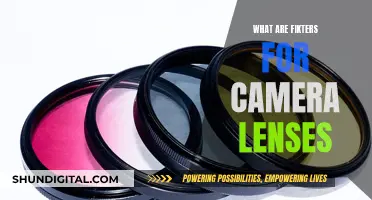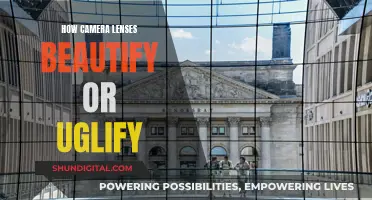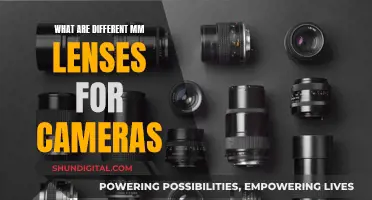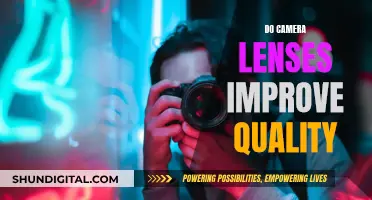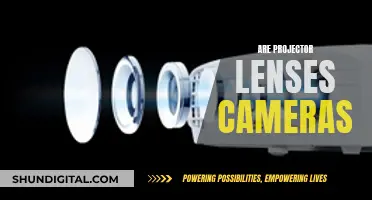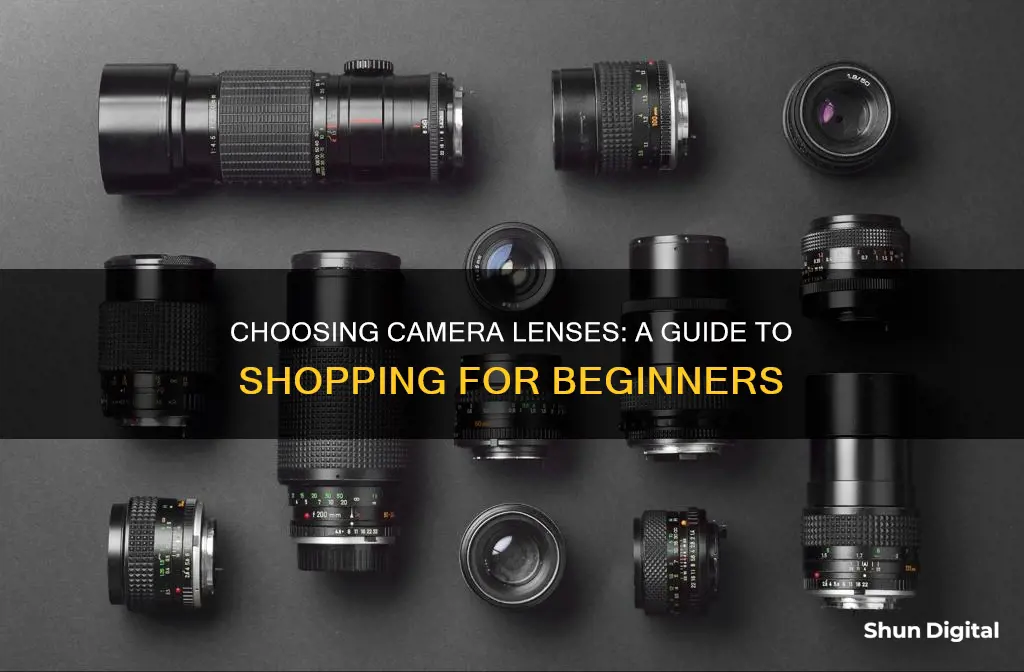
When shopping for a camera lens, it's important to consider your photography requirements. The type of lens you need will depend on the kind of images you want to capture. For example, if you're interested in shooting landscapes and travel photos, a wide-angle lens could be a good option. On the other hand, if you want to get up close and personal with your subject, a telephoto lens with a long focal length is the way to go.
Another factor to consider is the aperture, or how much light can enter your camera. Lenses with wider apertures are ideal for low-light situations and can help you achieve that beautifully blurred background effect.
You'll also need to decide between a prime lens, which has a fixed focal length and tends to be smaller, lighter, and cheaper, or a zoom lens, which offers more flexibility but may sacrifice quality and cost.
Lastly, don't forget to check that the lens is compatible with your camera's sensor and lens mount type.
With these considerations in mind, you'll be well on your way to finding the perfect camera lens for your needs.
| Characteristics | Values |
|---|---|
| Focal length | The distance (in mm) from the centre of the lens to the sensor when the subject is in focus. Lower focal length = wider shot, higher focal length = longer zoom. |
| Aperture | The measure of how much light can enter the camera, represented by the letter f and a number (f-stop). A smaller f-stop means a wider opening, allowing more light in. |
| Prime vs. zoom lens | Prime lenses have a fixed focal length and are smaller, lighter, and cheaper. Zoom lenses cover a range of focal lengths and are bulkier and pricier. |
| Compatibility with camera sensor | DSLR and mirrorless cameras use either CCD or CMOS sensors. Lenses must be compatible with the camera body and sensor size. |
| Budget | Third-party lenses are available at lower prices than name-brand lenses. |

Prime vs Zoom Lenses
Overview
Prime lenses have a fixed focal length, meaning the only way to change the angle of view is to physically move the camera. Zoom lenses, on the other hand, have a variable focal length, allowing you to change the angle of view by turning the zoom ring.
Size and Weight
Prime lenses are generally smaller and lighter than zoom lenses, although this depends on the focal length and other factors such as whether it is a telephoto or super telephoto lens.
Maximum Aperture
Prime lenses typically have a larger maximum aperture than zoom lenses, allowing for better low-light performance and more control over depth of field. This is because prime lenses have simpler optics, making it easier to incorporate a larger maximum aperture without significantly impacting size and cost.
Versatility
Zoom lenses offer more versatility than prime lenses, as they can cover a range of focal lengths. This makes them a good choice for situations where you need to quickly change focal lengths, such as when shooting landscapes or wildlife. Prime lenses, on the other hand, offer more physicality and can encourage you to be more creative with your compositions.
Image Quality
Prime lenses are often considered to be sharper than zoom lenses, as it is more difficult to create a zoom lens with consistently good optical quality throughout the entire focal range. However, modern professional-grade zoom lenses can offer image quality that matches or even surpasses that of prime lenses.
Cost
Prime lenses are usually cheaper than zoom lenses, especially when comparing lenses with similar maximum apertures. This makes them a good option for photographers on a budget.
Selling Camera Gear: Strategies for Moving Inventory
You may want to see also

Aperture
The aperture is expressed in f-numbers like f/1.4, f/2, f/2.8, f/4, f/5.6, f/8, f/11, and f/16. The letter "f" followed by a slash is known as an f-stop or f-number. A small f-stop means a larger opening, which lets in more light and gives a shallow depth of field. Conversely, a large f-stop means a smaller opening, which lets in less light and gives a wider depth of field. For example, an aperture of f/2.8 is larger than f/4 and much larger than f/11.
When choosing a lens, it is important to consider the maximum aperture, as this determines how much light the lens can gather. Lenses with large apertures, such as f/1.4 or f/1.8, are considered "fast" lenses and are usually more expensive. Zoom lenses typically have variable maximum apertures, while prime lenses tend to have larger maximum apertures.
Bridge Cameras: Interchangeable Lenses and Their Limitations
You may want to see also

Focal Length
If you want to fit more into your frame, you might want to look into wide-angle focal lengths: 14mm, 20mm, 24mm, 28mm, and 35mm. Wide-angle lenses are popular for landscape photography, interiors, large group photos and when working in confined spaces.
On the other hand, if you want to get as close as possible to your subject, go for a telephoto lens with focal lengths that usually range from 50mm to 100mm. Telephoto lenses are very popular for portraiture and product photography, as well as nature and wildlife imagery. They allow the photographer to produce close crops on the subject and take photos at a distance that does not intrude upon the subject.
There are two types of lenses: prime and zoom. Prime lenses have a fixed focal length and zoom lenses have variable focal lengths. The main advantages of prime lenses are their size and weight, as well as their maximum aperture or f/stop. Prime lenses tend to be more compact and lightweight than zoom lenses, and they also tend to have a larger maximum aperture (f/1.4 to f/2.8). This is an advantage when shooting in low light conditions as it will increase the possibility of hand-holding the camera and freezing the subject without shake or blur caused by the longer exposures.
Cleaning Camera Lenses: A Step-by-Step Guide
You may want to see also

Compatibility with Camera
When it comes to compatibility with your camera, there are a few things to consider. Firstly, you need to ensure that the lens will physically fit your camera. Different camera brands use different lens mounts, so it's important to check that the lens is compatible with your camera's lens mount. Some lens mounts are also specific to certain camera models, so be sure to check the compatibility of both the lens and the camera model.
Another important factor to consider is the sensor size of your camera. There are two main types of sensors: cropped sensors (also known as APS-C) and full-frame sensors. Most entry-level DSLR and mirrorless cameras use cropped sensors, which are smaller than full-frame sensors. The lens you choose should be compatible with your camera's sensor size. Using a full-frame lens on a cropped sensor camera will result in a cropped image, while using a cropped sensor lens on a full-frame camera will result in a reduced image quality.
It's also worth noting that some lenses are designed specifically for certain types of cameras, such as DSLR or mirrorless cameras. These lenses may not work properly with other types of cameras, so be sure to check the compatibility before purchasing.
Additionally, different lenses may have different features that are compatible with your camera. For example, some lenses may have image stabilization, autofocus, or manual focus capabilities that work in conjunction with your camera's features. Be sure to check the compatibility of these features before purchasing a lens.
Lastly, consider the price and brand of the lens. Different brands may have different prices for similar lenses, so it's important to compare prices and features before making a decision. Additionally, some camera brands may only be compatible with lenses from the same brand, so be sure to check the compatibility before purchasing.
How Camera Lenses Use Refraction to Capture Images
You may want to see also

Budget
When shopping for camera lenses on a budget, it's important to understand the basic features and specifications that will impact your purchase. Here are some key considerations to keep in mind:
Focal Length
Focal length defines the angle of view your lens provides. A shorter focal length gives you a wider image, allowing you to capture more of the scene. On the other hand, a longer focal length lets you zoom in for a narrower, closely cropped shot. Entry-level DSLR cameras often come with an 18–55mm lens, which is suitable for general-purpose photography. If you want more zoom capabilities, consider investing in a telephoto lens, typically in the 55–300mm range.
Aperture
Aperture, also known as the f-stop number, controls the amount of light that enters the lens and the depth of field. A lower f-stop value results in a shallower depth of field, creating a stylish blurred background effect. Lenses with larger maximum apertures (lower f-stop numbers) offer more creative control and perform better in low-light conditions. For example, an f/2.8 lens can capture sharper images in low light without the need for a flash.
Image Stabilization
Image stabilization is a feature that compensates for camera shake, ensuring sharper images, especially in low-light conditions or when using telephoto lenses. This feature is particularly useful for handheld shots and can be found in lenses from various manufacturers, such as Nikon's Vibration Reduction or Canon's Image Stabilization.
Lens Mount
Before purchasing a lens, ensure that it is physically compatible with your camera. Different camera systems have specific lens mounts, and there is no cross-compatibility between brands. Check your camera's user manual or search online to identify the correct lens mount for your camera model.
Prime vs. Zoom Lenses
Prime lenses have a fixed focal length and tend to offer better optical quality, faster maximum apertures, and sharper images. They are also more lightweight and affordable. In contrast, zoom lenses offer a range of focal lengths, providing more versatility but often at the cost of image quality and maximum aperture.
Third-Party Lenses
Consider exploring third-party lens manufacturers such as Sigma and Tamron, which offer more affordable options that are designed to fit most top-brand cameras. These lenses can provide good value for money without compromising image quality.
Used or Older Lenses
If you're on a tight budget, consider purchasing used or older lenses. Canon lenses from the late 1980s and select Nikon lenses up to 50 years old are known to work flawlessly with newer DSLR models. This can be a cost-effective way to acquire high-quality lenses without breaking the bank.
When shopping for camera lenses on a budget, it's essential to prioritize your needs and strike a balance between price and performance. By understanding the key specifications and exploring various options, you can find lenses that fit your budget and help you capture stunning images.
Camera Lenses: Almost Perfectly Diffraction Limited?
You may want to see also
Frequently asked questions
The key specifications to be aware of are focal length, aperture, lens mount type, and vibration reduction and autofocus. The focal length of a lens is the distance between the lens and the image sensor, and it determines the extent to which the lens can zoom. The aperture is the opening in the lens that lets light enter the camera, and it is measured in f-numbers or f-stops. The lens mount type needs to be compatible with your camera, and vibration reduction and autofocus are additional features that can improve your photography experience.
The two main types of lenses are prime and zoom lenses. Prime lenses have a fixed focal length and are known for delivering high-quality images with a wide aperture. Zoom lenses, on the other hand, offer a range of focal lengths and are more flexible but may sacrifice quality and cost more. The type of lens you choose depends on your photography needs. If you want to explore different focal lengths without having to switch lenses, a zoom lens is ideal. If you prioritize image quality, a prime lens might be a better option.
Camera lenses are designed to be compatible with specific camera models and brands. You need to ensure that the lens mount type of the lens matches your camera's lens mount type. Additionally, some lenses are designed for crop sensor cameras, while others are for full-frame cameras. Check your camera's specifications to determine its sensor type and crop factor, which will help you choose the right lens.
The lens you choose depends on the type of photography you want to do. For portrait photography, a prime lens with a longer focal length, such as 85mm, is ideal as it flatters the subject's facial features. For landscape photography, a wide-angle lens that lets you capture a broad view is a good choice. Telephoto lenses with a long focal length are suitable for wildlife and sports photography, while macro lenses are perfect for capturing tiny details like insects or flowers.


